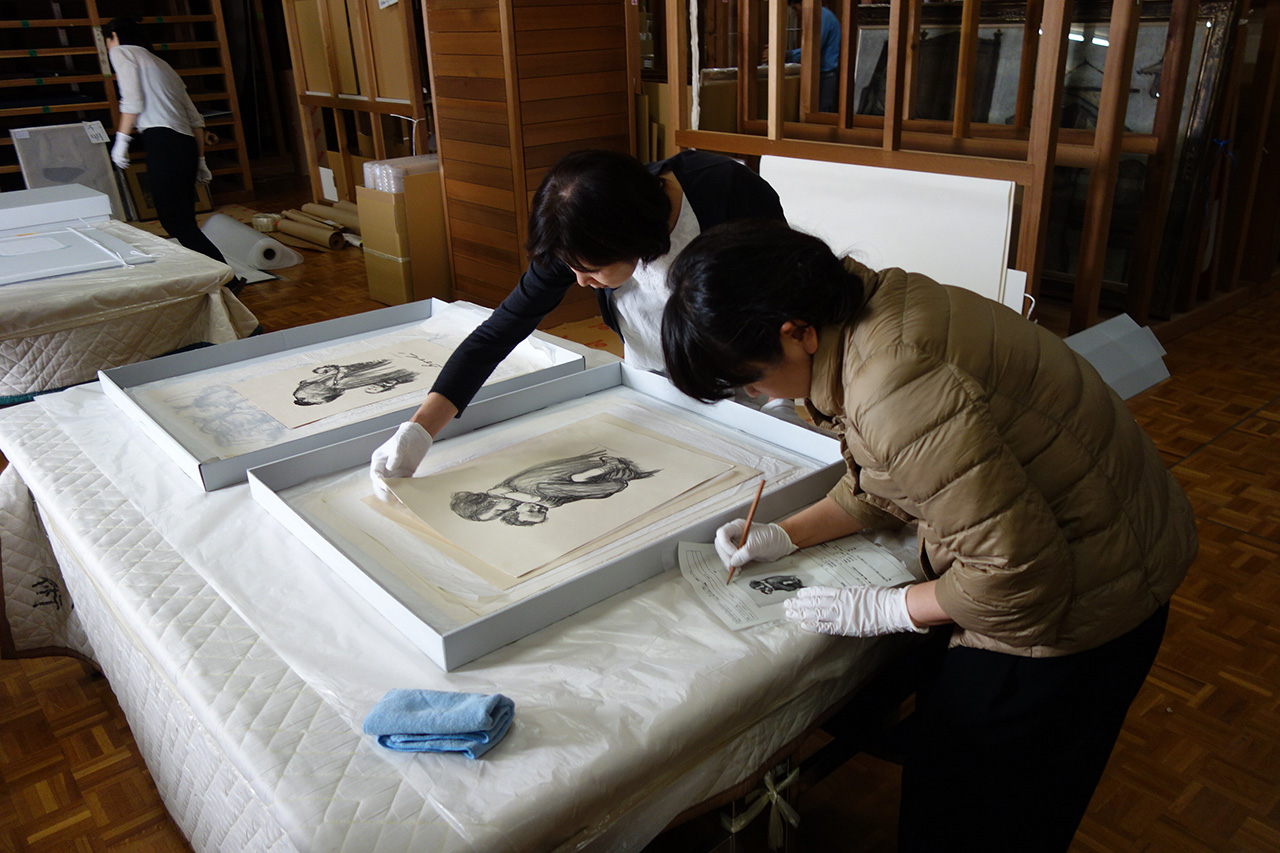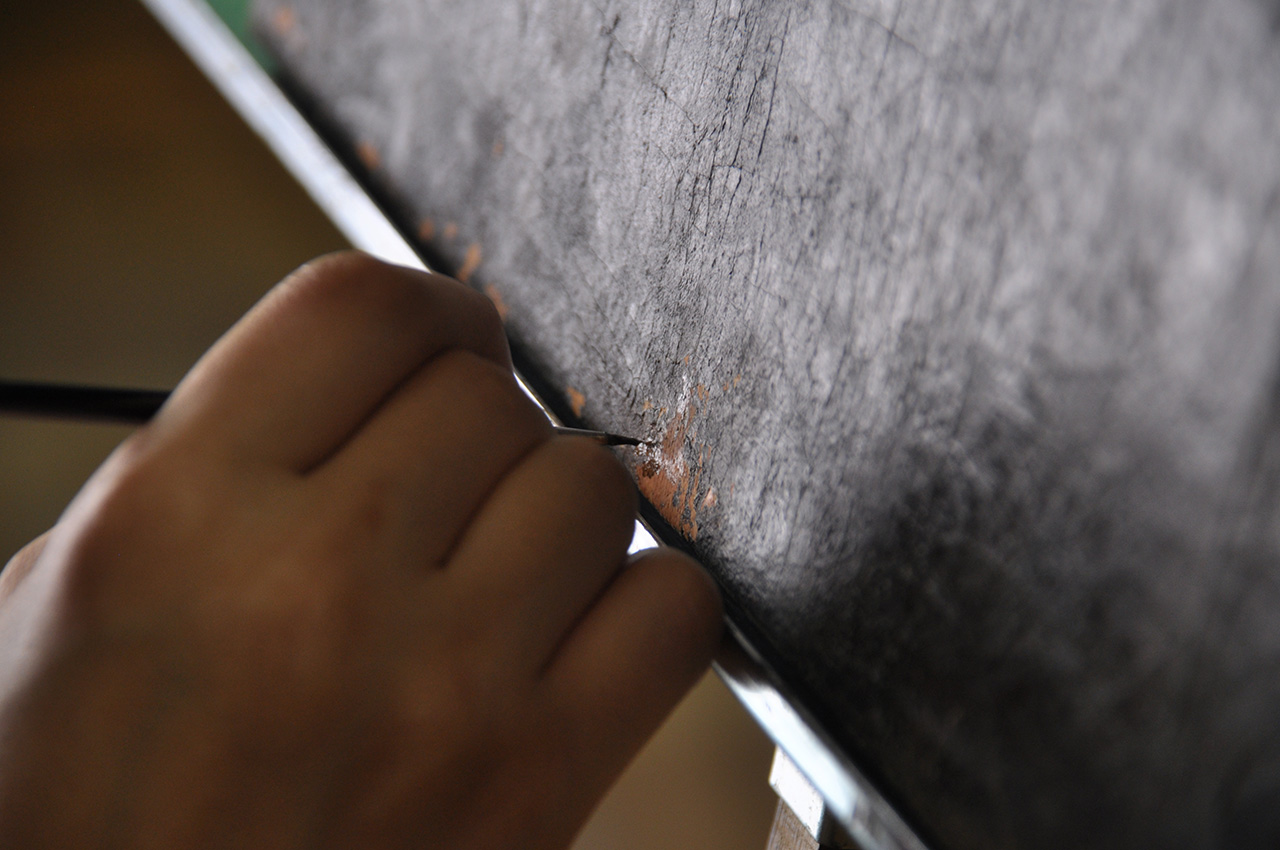Conservation is the maintenance of works of art in appropriate condition, so as to link the past and the future. In old days, conservation basically meant restoring damaged works so they were as close as possible to their original state. After the mid-20th century, however, the focus of conservation gradually changed to maintaining the status quo rather than proactively intervening in the artwork. And today, the mainstream approach is called “preventive conservation,” meaning preserving works by regulating their conservation environment to prevent problems before they occur.
 Imagine that an art piece is a patient, a conservator is a doctor, and maintenance and repair are medical treatments. The patient might require major surgery, or might avoid such interventions and live a long healthy life by being mindful of diet and sleep. In the same way, it is possible to maintain works of art in good condition by arranging for a proper environment. On the other hand, it can be hard to detect problems because works of art have no voices to exclaim “I am in pain,” or “We are suffering,” as humans do. Therefore, we need to prevent problems through periodic inspections and daily cleanings and visual checks of works. However, when problems do occur, it is necessary to find the cause and perform restorative treatments, and a series of procedures needs to be in place.
Imagine that an art piece is a patient, a conservator is a doctor, and maintenance and repair are medical treatments. The patient might require major surgery, or might avoid such interventions and live a long healthy life by being mindful of diet and sleep. In the same way, it is possible to maintain works of art in good condition by arranging for a proper environment. On the other hand, it can be hard to detect problems because works of art have no voices to exclaim “I am in pain,” or “We are suffering,” as humans do. Therefore, we need to prevent problems through periodic inspections and daily cleanings and visual checks of works. However, when problems do occur, it is necessary to find the cause and perform restorative treatments, and a series of procedures needs to be in place.
 The primary tasks handled by the Fukuoka Art Museum are “preventive conservation” and “restoration,” with most of the work consisting of “preventive conservation.” In specific terms, this means daily regulation of environmental factors such as temperature and humidity, air pollution, light, biological damage, and prevention of theft, damage from disasters and so forth. We must perform these duties accurately so as to avoid damaging the works. Also, we must carry out “restoration” effectively if unforeseen damage affects the collection. While we sometimes carry out appropriate emergency repairs, when a work requires full-fledged treatment, we consult and hire professional specialist conservators in various fields who are located throughout Japan. In all cases, we determine in advance how to repair the work, firmly decide on an approach, and firmly comply with procedures for supervising the restoration for the piece.
The primary tasks handled by the Fukuoka Art Museum are “preventive conservation” and “restoration,” with most of the work consisting of “preventive conservation.” In specific terms, this means daily regulation of environmental factors such as temperature and humidity, air pollution, light, biological damage, and prevention of theft, damage from disasters and so forth. We must perform these duties accurately so as to avoid damaging the works. Also, we must carry out “restoration” effectively if unforeseen damage affects the collection. While we sometimes carry out appropriate emergency repairs, when a work requires full-fledged treatment, we consult and hire professional specialist conservators in various fields who are located throughout Japan. In all cases, we determine in advance how to repair the work, firmly decide on an approach, and firmly comply with procedures for supervising the restoration for the piece.
To conserve works of art for the next generation, all members of the museum cooperate, with a long-term perspective, and make every effort to maintain them properly day-to-day.